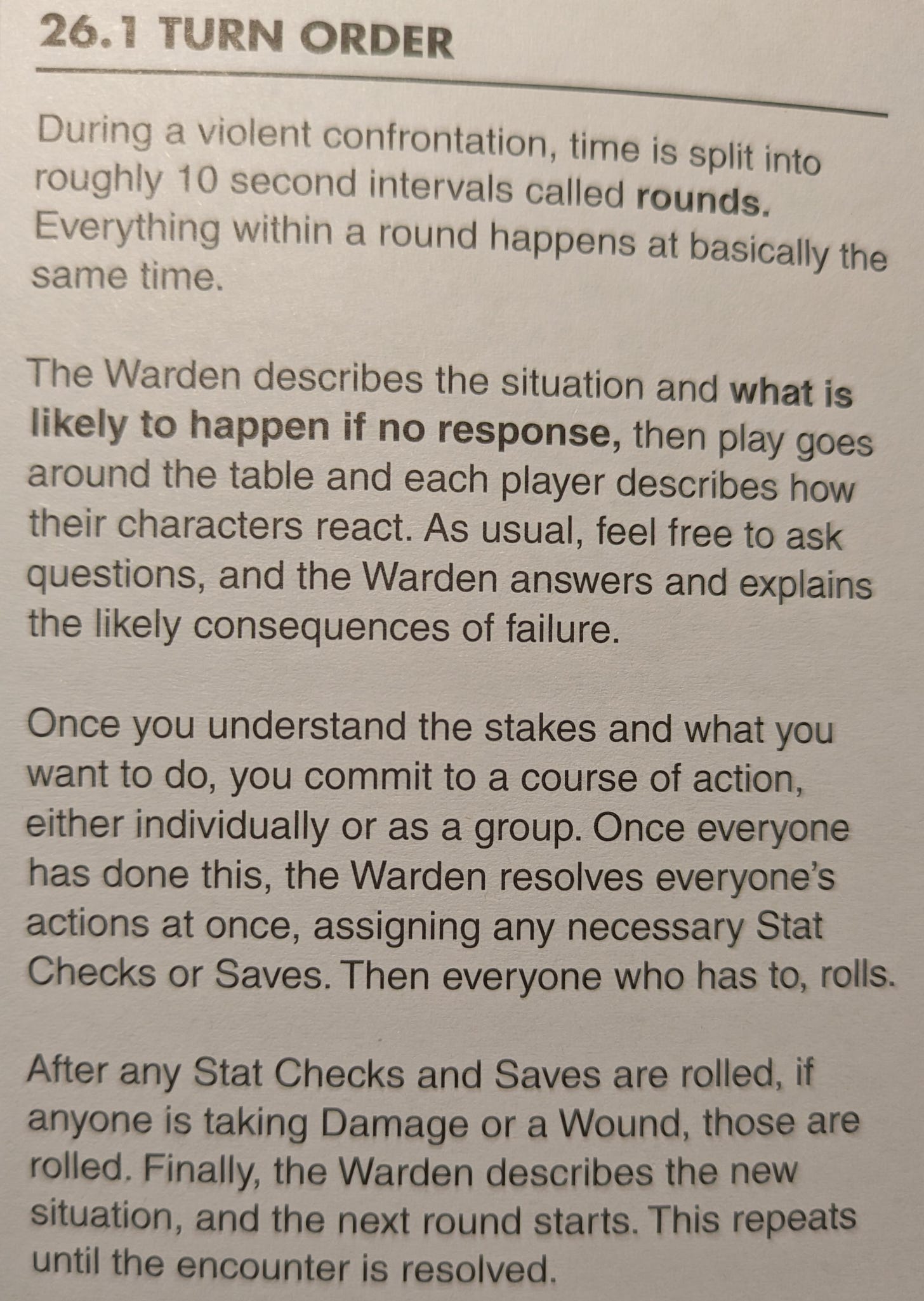A number of new subscribers on the channel have been asking me to explain what the OSR style of play is, so I made a video on that!
Good news for those of you looking to get a copy of the Knave 2e Premium edition, which was sold out a few months back. The 2nd printing is now available over on the Swordfish Islands webstore, this time with a silver foil treatment (in case you wanted to collect them all). Limited to 500 copies.
We have also received the 2nd printing of the Knave 2e standard edition. There are only a small number of copies from the 1st printing left.
I got to play a PC on Esper the Bard’s channel recently, alongside Hankerin Ferinale (Runehammer), Kelsey Dionne (Shadowdark), and Mark Seifter (Roll for Combat). Watch us tackle a hardcore Gauntlet Runner adventure in the City of Mazes!
I Love Simultaneous Combat
Figuring out how to structure combat for OSR games has been something that’s bothered me for a long time.
My view is that games are all about making impactful choices, and in the OSR these choices should take place within dangerous situations that the players have to navigate and resolve. Combat is not an exception to this; it’s just another situation.
Plenty of other RPGs have a similar view. You see lots of advice in other systems on how to create dynamic combat where the environments are shifting, where monsters have specific tactics and weaknesses that have to be understood, etc. But all of these games, including most OSR games, are also tied to a fairly rigid, turn-based combat structure, where individuals or sides get to make choices in a pre-determined sequence.
This isn’t a bad thing, to be clear. There are some real advantages to structured combat (Knave 2e and Maze Rats use a similar system), but I’m starting to think that if you really want to double-down on the OSR style of play, it’s not ideal.
When each player takes a separate turn, the situation becomes fragmented. You no longer consider the whole of what is going on and how to resolve it. Instead you’re encouraged to think, “What can I do that would maximize my effectiveness while everyone else is frozen in time?” OSR games should encourage players to treat the world as if it were real, but the turn-based structure can really pull against that.
Enter Mothership, which I ran for the first time a few days ago. I actually recorded this session for YouTube, and I should be uploading it with my commentary sometime soon (future Ben here, it’s up now.) Mothership’s combat system works like this:
Combat, in other words, is completely simultaneous. This is something that I was tinkering with back when I was designing Maze Knights, but getting to play with it in Mothership really brought the advantages of it into focus.
Simultaneous combat presents each round of combat as a new situation for the players to solve, effectively turning it into an “OSR style problem”. Because they are all acting at once, players are forced to think about how they are cooperating. Tactics that wouldn’t come up in “sequential combat” are suddenly viable because now everything is a combo move and everyone’s actions potentially affect everyone else’s. This also puts more emphasis on player skill over character skill, another OSR mantra.
It forces the players to treat the world like it’s real, because time doesn’t freeze as each player acts; everything is in motion all at once and that has to be accounted for in their plans. The “round” is the only vestigial part of the traditional combat sequence that remains, and exists to provide pause points to re-evaluate the most recent situation and come up with a new plan.
By regularly explaining what the enemy is about to do and what will happen if the PCs do nothing, the GM is always providing the players with information to base their decisions on and telegraphing approaching danger.
As with many procedures in the OSR style, it emphasizes rulings over rules. Some groups may want combat to be more procedural so they they have more control over what happens, but if the GM is good about talking through the consequences of failure before everyone rolls, no one should feel like it’s unfair.
Importantly for me, it’s fast. No one is ever confused about whose turn it is or is getting bored waiting for their turn. There are only two states: planning the next round and watching it resolve, both of which involve your character.
Let me know below what your experience has been like using simultaneous combat, and if you know what the earliest example of it was.



The second every RPG published, Tunnels & Trolls uses simultaneous combat resolution. That's the thing that always gets me about OSR discourse...the Old School they are talking about tends to ignore all the old school games that aren't D&D.
Classic Traveller used simultaneous combat rounds. So that puts it back at 1977.